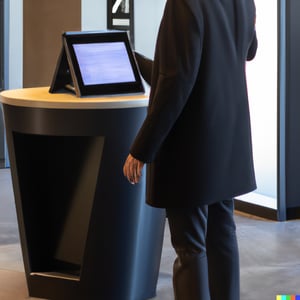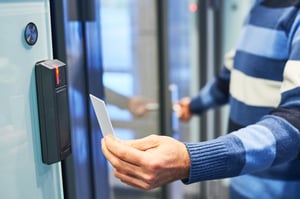The security industry is booming. There are more threats and attacks than ever before, and the bad guys are getting smarter. It’s important to stay up-to-date with the latest security solutions for your organization.
This blog post will give you a rundown of some of the most essential security products on the market today so you can keep your business safe.
Visitors Management System
 A visitor management system is software that allows organizations to manage visitors and their access to the company. It is used for security purposes, compliance purposes, and regulatory purposes.
A visitor management system is software that allows organizations to manage visitors and their access to the company. It is used for security purposes, compliance purposes, and regulatory purposes.
Visitors management software can be installed on computers in any part of your office, like the reception desk, cafeteria, etc., so it helps you to know who is entering or leaving from where in your premises.
It also helps you keep track of visitor entry timings, along with their details such as name, address, etc., which will help you maintain the record-keeping system easily without any hassle while providing good service quality at all times.
Endpoint Protection
If you’re looking for a comprehensive way to protect against viruses and other threats, as well as data loss, endpoint protection is the way to go. You can install it on all devices, phones, tablets, computers, and operating systems including Windows 10, macOS, and Android.
It protects against browser-based attacks such as phishing scams that try to steal personal information by tricking users into visiting fake websites designed with lookalikes for popular banking sites or e-commerce sites like Amazon.
According to Newswires, the global Endpoint Security market is expected to experience significant growth globally in the coming years. In 2021, the market size was valued at USD 13.2 billion, which is expected to reach USD 15.8 billion by 2031. Displaying a projected compound annual growth rate (CAGR) of 8.9% between 2023 and 2031.
Email Security
Email security is a key component of any security strategy. It’s critical to your organization’s IT infrastructure, and it can be implemented in several ways:
- Email encryption. This process uses encryption to protect email messages from unauthorized access by encrypting the content of the message so that only authorized users can read it.
The sender’s identity is verified through digital signatures before encryption occurs, which helps ensure that no one has tampered with the message after it was sent and thus avoids any potential for fraud.
- Spam filtering and antivirus software. These two tools help reduce spam by automatically blocking messages from known spammers and preventing viruses from getting into your inboxes. Both are important steps toward keeping your employees safe online.
Antivirus Protection
Antivirus software is an essential part of any business’s security arsenal. It detects and removes malicious software from your computer, ensuring that your network is safe from hackers and other threats.
An average of 350,000 malware instances are registered daily, according to Security Intelligence. To keep up with it, some antivirus providers update their programs throughout the day, while others release scheduled daily, weekly, or monthly.
A next-generation antivirus platform analyzes malicious files’ actions or intentions and determines when something is suspicious about 99% of the time.
Web Security
Web security is the protection of websites, web applications, and other systems that are accessible via the World Wide Web. It’s a subset of information security and information assurance.
Web security includes:
- Protection against loss, theft, and corruption of data on web servers and in databases,
- Prevention from unauthorized access to information or services,
- Prevention from denial-of-service attacks (DoS) against websites,
- Spam filtering,
- Maintaining confidentiality across public networks such as Wi-Fi hotspots or WiMax networks where eavesdropping may be possible,
- Authenticating users so only authorized people can access resources or services offered by an organization over its website(s).
Identity Access Management
 Identity access management is managing the identities of users and other entities, such as devices, in an organization. It can also be referred to as identity and access management or IAM.
Identity access management is managing the identities of users and other entities, such as devices, in an organization. It can also be referred to as identity and access management or IAM.
IAM is a set of policies, processes, and technologies that are used to control and manage the access of users to specific applications, resources, and systems. The goal of IAM is twofold. Firstly it ensures that only authorized people have access to IT resources. Secondly, it allows organizations to ensure compliance with regulatory requirements such as GDPR (General Data Protection Regulation).
But managing identities on-premises isn’t enough. According to VentureBeat, organizations today need automated, cloud-friendly IAM processes if they’re going to authorize and authenticate remote users at scale. The decentralized working environments require being agile.
Conclusion
With so many different types of security solutions available, it can be difficult to decide which one is best for your organization. There are many factors to consider, including budget and resources.
However, by choosing a solution that offers flexibility, ease of use, and powerful reporting capabilities-you’ll be able to protect your business from threats without breaking the bank.